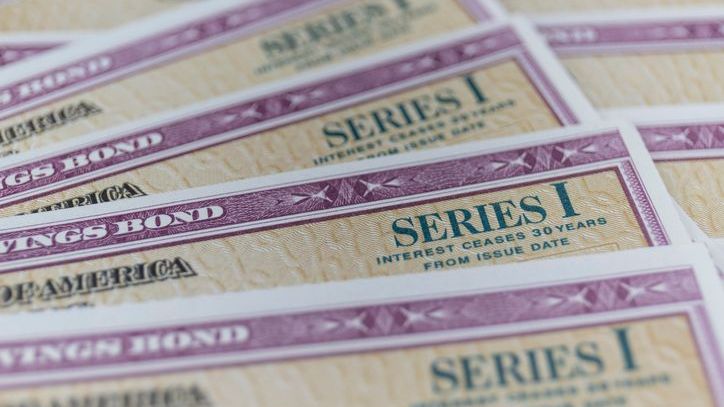Investing in safe haven assets can help investors protect their wealth during times of economic uncertainty and market volatility. These assets, which include defensive stocks, government bonds, currencies, gold and cash, are sought after for their ability to provide stability and security when other investments experience significant downturns or increased risk. By allocating a portion of their portfolio to safe haven assets, investors can reduce their overall risk exposure, preserve capital and minimize potential losses during turbulent market conditions.
A financial advisor can help you select investments that align with your needs, time horizon and capacity for risk. Connect with a fiduciary financial advisor today.
What Are Safe Haven Assets?
Safe haven assets are investments that can stabilize a portfolio when other investments, such as stocks or real estate, experience significant downturns or increased risk. Gold, which has been used as a store of value for centuries, is a prime example of a safe haven asset. Gold prices often rise during economic turmoil, as investors flock to the precious metal for its perceived stability and inherent value.
For example, during the 2008 financial crisis, a global economic downturn triggered by the collapse of the U.S. housing market and the subsequent failure of several major financial institutions, investors flocked to safe haven assets like gold and U.S. Treasury bonds. Gold prices rose from around $836 per ounce at the end of 2007 to nearly $1,600 per ounce by the end of 2011, while the yield on the 10-year Treasury note fell from 4.04% to 1.89% over the same period, indicating increased demand for these safe haven assets.
Other examples of safe haven assets include government bonds from stable countries like the United States or Switzerland, and currencies such as the Japanese yen or Swiss franc, which tend to appreciate during market downturns.
Investors are drawn to safe haven assets for various reasons, primarily for risk mitigation, capital preservation and portfolio diversification. During times of economic instability or geopolitical tensions, the value of riskier assets like stocks can plummet, leading to substantial losses for investors. By allocating a portion of their portfolio to safe haven assets, investors can reduce their overall risk exposure and minimize potential losses.
Historical data supports this strategy, as evidenced by the performance of safe haven assets during major market events. During the COVID-19 pandemic-induced market crash in March 2020, consumer staples and health care sectors – both considered to be safe havens – performed best, according to the Federal Reserve Bank of St. Louis.
When to Invest in Safe Haven Assets

Investing in safe haven assets is often considered prudent when signs of economic instability or downturns appear. For example, during a market correction or when economic indicators predict a recession, investors might move their assets to safer options to avoid potential losses. This strategy is employed not just to safeguard capital but also to potentially capitalize on the increased value of these safe havens as demand for them grows during risky times.
Geopolitical events such as wars, elections and other political uncertainties can also prompt investors to seek out safe haven assets. The idea is that these assets will perform better than the broader market under such conditions. For example, if investors anticipate increased volatility or economic impacts from political unrest in a significant economy, they may increase their holdings in assets deemed safer.
Financial experts generally recommend allocating a portion of an investment portfolio to safe haven assets based on an individual’s risk tolerance. Conservative investors who prioritize capital preservation and may be less comfortable with market fluctuations might allocate a considerable percentage of their portfolio to safe havens, while more aggressive investors with long time horizons may forgo safe havens altogether.
Examples of Safe Haven Assets

One of the key benefits of safe haven assets is their low or negative correlations with other asset classes, such as stocks and real estate. A low correlation means that the prices of two assets move independently of each other, while a negative correlation indicates that the prices move in opposite directions.
This means that when traditional assets experience declines, safe haven assets may maintain their value or even appreciate, helping to offset losses in other parts of the portfolio.
Here are five common safe haven assets:
Defensive Stocks
Defensive or non-cyclical stocks are shares of companies that provide essential products or services and tend to maintain stable earnings regardless of the state of the overall economy. These companies typically operate in sectors such as utilities, healthcare and consumer staples, which are less sensitive to economic cycles. For example, companies like Procter & Gamble, which produces household essentials, tend to perform relatively well during recessions.
Utility companies like Duke Energy and American Water Works provide electricity, gas and water services that remain in demand regardless of economic conditions. These sectors are considered “defensive” because consumers continue to require these essential services even during economic downturns, ensuring a steady revenue stream for the companies.
In the healthcare sector, companies like Johnson & Johnson and Pfizer produce essential medical products and pharmaceuticals. Consumer staples giants like Coca-Cola and Walmart offer products that people continue to buy even during tough times.
U.S. Government Bonds
U.S. government bonds are considered safe havens due to their low default risk. Investors trust that the government will honor its debt obligations, making their bonds a reliable investment during uncertain times. As of April 2024, the yield on a 10-year U.S. Treasury note was around 4.7%, providing investors with a guaranteed return if held to maturity. While these returns may be lower than other investments, the low risk and stability of government bonds make them a popular choice for risk-averse investors.
However, it is important to consider the potential drawbacks of government bonds, such as their low returns relative to other investments. During periods of low interest rates, the returns on government bonds may struggle to keep pace with inflation, resulting in a loss of purchasing power over time.
Currencies
Certain currencies, such as the U.S. dollar, Japanese yen and Swiss franc, are considered safe haven assets. These currencies are often associated with stable economies and political systems, making them attractive during global economic turmoil. For example, during the European debt crisis in 2010-2012, the Swiss franc appreciated significantly against the Euro as investors sought a safe haven. Safe haven currencies are widely traded and highly liquid, allowing investors to easily buy and sell them as needed.
Gold
Gold has been a store of value for thousands of years and is often seen as a hedge against inflation and economic uncertainty. Investors can gain exposure to gold through various means, such as physical bullion, gold exchange-traded funds (ETFs) and mining stocks. Physical bullion offers direct ownership of the metal, while gold ETFs provide a more convenient and liquid way to invest in gold.
Mining stocks allow investors to benefit from the potential growth of gold mining companies, but these stocks also carry additional risks related to the individual companies’ operations and financial health.
Cash
While cash may not provide the growth potential of other investments, it offers stability and liquidity during market downturns. For example, during the dot-com crash in 2000-2002, investors who held a portion of their portfolio in cash were able to minimize their losses and had the liquidity to invest in undervalued assets.
Moreover, holding cash ensures that a portion of an investor’s portfolio is protected from market volatility, preserving capital during economic crises. However, it is important to note that holding too much cash for an extended period can result in missed opportunities for growth and the erosion of purchasing power due to inflation.
Pros and Cons of Safe Haven Assets
Safe haven assets offer protection and help investors diversify their portfolios, but they also come with unique disadvantages.
Pros of Safe Haven Assets
- Stability in volatile markets: Safe haven assets typically provide stability as they are less likely to see wide swings in value compared to stocks or other volatile investments.
- Diversification: Including safe haven assets in a portfolio can enhance diversification, helping mitigate risks associated with other investments and reduce the overall volatility of a portfolio.
- Hedge against inflation: Safe haven assets like gold are popular for protecting against inflation and preserving the purchasing power of an investor’s money.
Cons of Safe Haven Assets
- Lower returns in stable times: While safe haven assets provide security during downturns, they typically offer lower returns compared to equities or other high-risk investments in stable or booming markets. This trade-off can lead to missed opportunities during economic growth periods.
- Not entirely risk-free: Although considered safer, these assets are not completely free from risks. For example, gold prices can be volatile in the short term and currencies like the yen may fluctuate due to political events or changes in monetary policy.
- Opportunity costs: Investing heavily in safe haven assets could cause an investor to miss out on higher returns from other asset classes.
Bottom Line
Safe haven assets play a crucial role in protecting investors’ wealth during times of economic uncertainty and market volatility. By understanding these assets, which include gold, government bonds, defensive stocks and currencies like the U.S. dollar, investors can make informed decisions to diversify their portfolios and mitigate risk. While the specific allocation to safe haven assets may vary based on individual risk tolerance and investment goals, incorporating these assets into a well-balanced portfolio can help preserve capital and offer peace of mind during turbulent market conditions.
Portfolio Management Tips
- If you’re unsure how much of your portfolio you should allocate to safe haven assets vs. growth-oriented assets, consider speaking with a financial advisor. Finding a financial advisor doesn’t have to be hard. SmartAsset’s free tool matches you with up to three vetted financial advisors who serve your area, and you can have a free introductory call with your advisor matches to decide which one you feel is right for you. If you’re ready to find an advisor who can help you achieve your financial goals, get started now.
- Retirement doesn’t have to mean that your days investing are over. In fact, continuing to invest in retirement can help ensure that your money will last as long as you do. If you’re unsure how to structure your portfolio in your golden years, Morningstar recommends what’s known as the “bucket strategy.” Using this approach, you would organize your assets into three groups or buckets: one for short-term spending needs, another for investments that you plan to cash out in the next three to 10 years, and a third bucket for higher-risk investments that you will hold for at least 10 years.
Photo credit: ©iStock.com/manything, ©iStock.com/:jetcityimage, ©iStock.com/Sean Anthony Eddy
